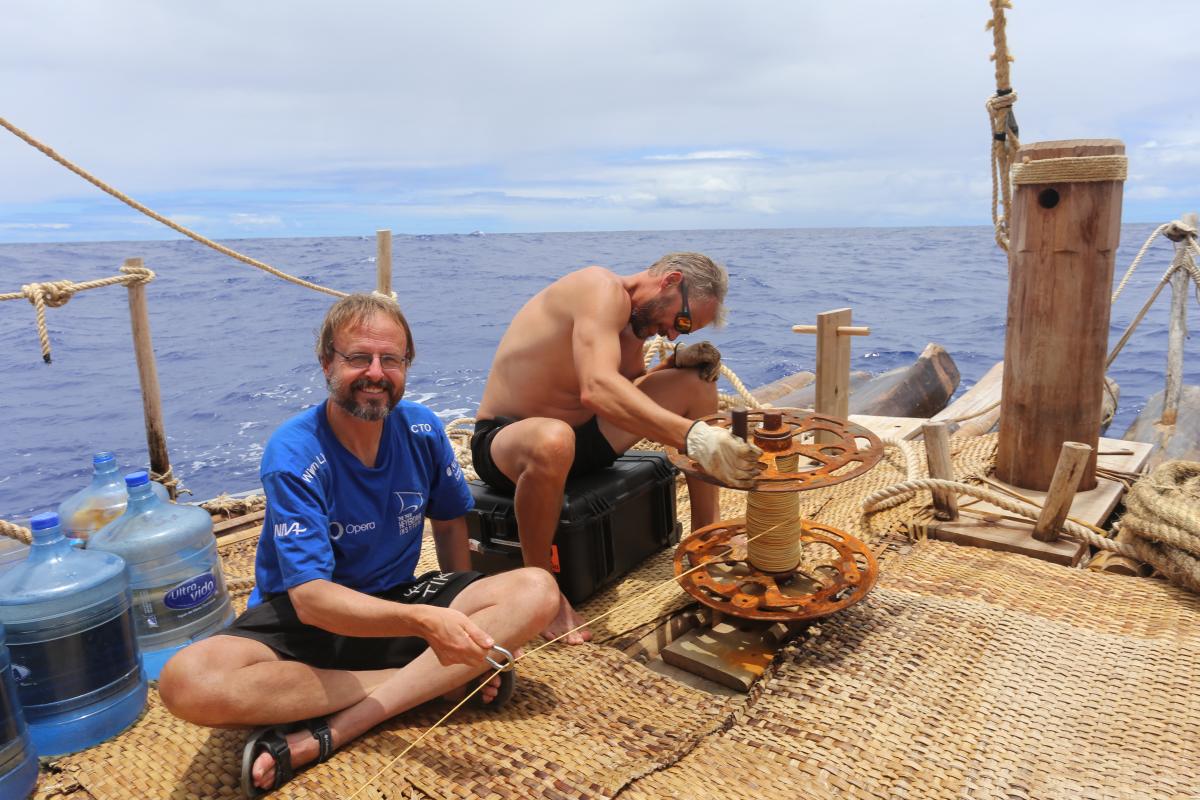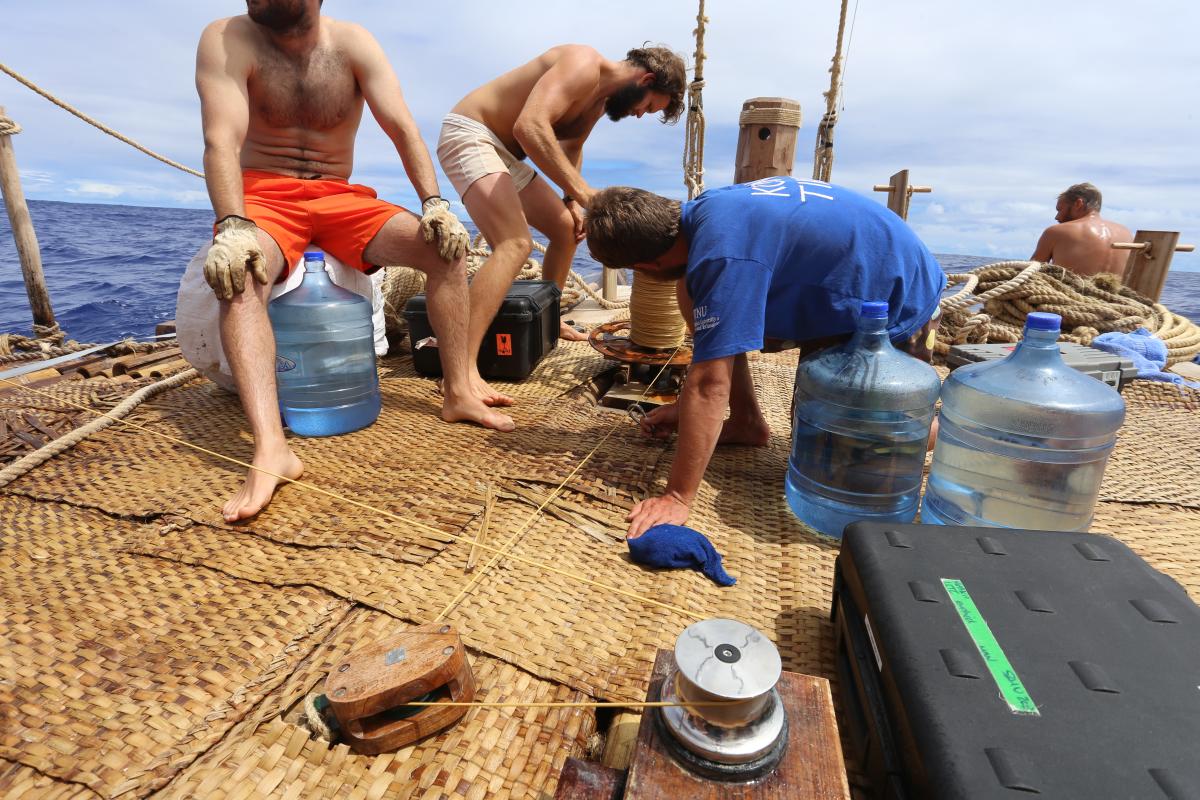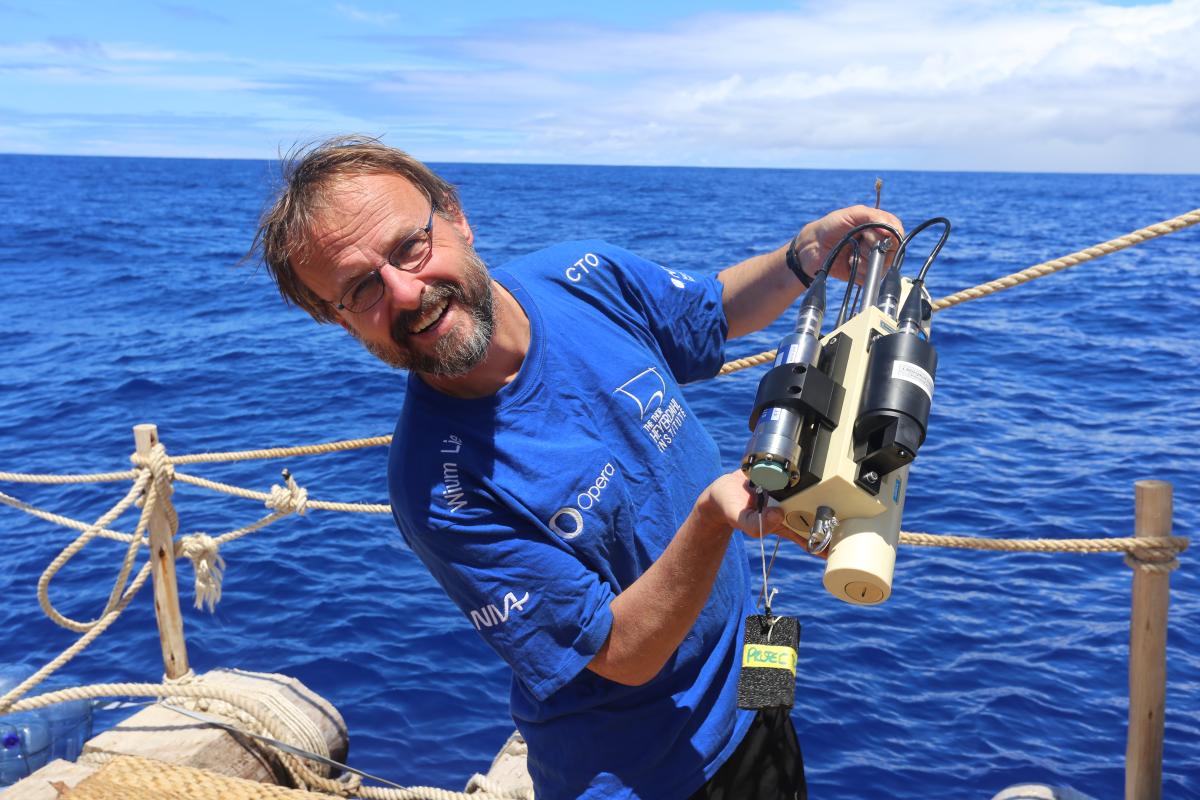CSS Creator Håkon Wium Lie Interview
Read an interview with Håkon Wium Lie, who is most notably recognized for his work in the development of CSS while collaborating with Tim Berners-Lee and Robert Cailliau at CERN.
From his early computer experiences in Norway to his role at CERN, Håkon Wium Lie shares insights on the evolution of the web, his passion for Linux, and his unique hobbies, revealing a rich blend of innovation and personal interests in this interview.
Introduction
We had a nice chat with Håkon Wium Lie, a prominent figure in web industry. Håkon has made significant contributions as a standards activist and web pioneer. He served as the Chief Technology Officer of Opera Software from 1998 until the company was acquired by new owners in 2016. Håkon is most notably recognized for his work in the development of Cascading Style Sheets (CSS) while collaborating with Tim Berners-Lee and Robert Cailliau at CERN in 1994.
Enjoy full interview below!
The Interview
-
Evrone: Everyone knows you as the person behind CSS, but few know how you got into it. Could you tell us a bit about where you studied and how you came to CERN?
Håkon Wium Lie: The college in my hometown (which is Halden, Norway) happened to have an Apple II computer when I came to visit as a 15-year old in 1980. My life took a different turn that day. Back then, personal computers were few and far between, this was a year or so before IBM released the PC. I glued myself to the machine and somehow this was tolerated. Computers became an obsession for me, especially creating computer games with colors and sound.
When I was old enough to start in college for real, computer science was a obvious choice. I did my senior year at West Georgia College (now University of West Georgia), where I mostly took the math classes I had shunned for programming in the early years. Math is important.
Another tranformative moment came in 1986 when I discovered the internet at Norwegian Telecom Research. I witnessed an email arrive all the way from San Francisco, and I immediately knew this would change my life. And the lives of many others. Again, I glued myself to the screen and spent many hours in online discussion groups. On the internet I discovered true freedom of expression, and a hacker culture. I found Steven Levy's book on «Hackers», and took the hacker ethics to heart.
Through Stewart Brand's book on «The Media Lab», I found my way to the eponymous lab where I spent two years. The Media Lab was fantastic environment for learning and experimentation, we had all the computers and connections for creating the web. Still, the web wasn't created there, it happened at CERN. CERN was also well-connected at the time, but computers were tools to serve the physicists, not the center of attention. That changed when Tim Berners-Lee invented HTML, HTTP and URLs. Robert Cailliau also contributed to the explosive growth of the web.
So, to be clear, I wasn't at CERN when the web was invented, but I heard the big bang and came running. When I arrived in 1994, I saw that one crucial piece of technology was missing: a way to describe colors, fonts, typography. That's when I started working on CSS.
Later in life, I sat down and did all the studies I should have done before proposing CSS. That turned into a PhD thesis at the University of Oslo.
-
Evrone: In one of your old interviews, you mentioned that you love Linux and ThinkPad laptops. Do you feel the same in 2023?
Håkon Wium Lie: I do. I'm typing this on an Thinkpad X250 computer, a model first introduced in 2015. I've upgraded it with a massive 4TB SSD, which allows me to bring my archive with me. Pretty much all emails I've written since 1986, and all photographs I've ever taken. My linux flavor of choice is Mint. I do most things in the browser (Opera) and in emacs (for email and HTML authoring). The X250 has a physical VGA port and ethernet port. Physical ports saved me in some tricky situations on the raft in the Pacific.
Also, as I learnt to type before computers came with Norwegian keyboards, I'm using US-style machines. Ebay is an excellent source for used Thinkpads with US keyboards.
-
Evrone: Nowadays, almost no one builds websites manually using HTML+CSS. From your point of view, is this a positive or negative trend?
Håkon Wium Lie: I recommend that all aspiring web designers start by writing HTML and CSS by hand. When you build something, it's important to understand the building blocks. On the web, one must understand the bits that "cross the wire", and not just the front-end pixels, or the back-end data.
However, there are also good reasons for reusing other people's code, often wrapped in frameworks. Some of the frameworks create complex, obfuscated, smelly CSS code with no sense of style, or thought of reuse. Others are works of art, in themselves, allowing you to craft responsive sites in minutes.
Personally, I prefer to write code by hand, using a HTML and CSS to their fullest extent, with some minimal JS snippets when in need. If I were to use a framework, I'd consider W3.CSS. I don't have any ties to w3schools, but I'm impressed by the consistent quality of their teaching materials. I've taken inspiration from them in the guides I've written on how to create beautiful PDF documents from HTML and CSS.
-
Evrone: Creating pure CSS animated videos and animations has become a hobby for designers and frontend developers. Is this a good way to explore the possibilities of CSS?
Håkon Wium Lie: Indeed! CSS Art is something that I never thought of in the first design phase. I first realized that we would have a "CSS Arts and Crafts" movement when Simon Daniels showed his CSS designs for the upcoming release of Internet Explorer 3. Simon produced some stunning designs, never before seen on the web.


-
Since the, CSS Art has given us endless hours of entertainment, and awe. Often, I have to check the source code to see how the heck they did that?!
Evrone: You must have formed a clear understanding of the future of the Web during your time as CTO of Opera Software. What will it look like in the foreseeable future, let’s say, in the next 5-10 years?
Håkon Wium Lie: At Opera, our foremost concern was to keep the web from becoming the private property of Microsoft or Netscape. Writing technical standards was the foremost weapon in the browser wars. Adhering to those standards was equally important; someone had to show that the standards were implementable. And someone had to expose those that did not support the standards. I wrote an open letter to Bill Gates about the dismal state of standards support in Internet Explorer. Also, some of us developed the Acid2 test, which was important in establishing baseline support for CSS in all browsers.
I must also add that many good people inside Microsoft and Netscape also worked hard to support standards. And when Internet Explorer 8 was released in 2009, it fully supported Acid2!
Looking forward, I don't see any major roadblocks for the web. There are no big competitors that will derail us. HTML, CSS and JavaScript will still be thriving 10 years from now.
My personal quest in the next decade will be to make CSS the natural choice for when printing books. Paper books will still be with us in the future and it's important that we can make good-looking books from the web, without the need for expensive manual labor. I've been working to replicate Edward Tufte's beautiful designs in CSS. Prince is able to create Tufte-like spreads if you follow this guide. (Disclosure: I'm the chairman in the company.)
-
Evrone: The term "metaverse" is becoming more and more popular. What do you think about it, could such an idea transform the modern world?
Håkon Wium Lie: Dave Raggett is best known as being one of the creators of HTML (along with Tim Berners-Lee and Dan Connolly), but he also worked on making virtual reality part of the early web. At the first WWW conference, at CERN in 1994, he presented VRML: Virtual Reality Markup Language. But it wasn't VRML that built the web, it is HTML which is Dave's legacy. One can possibly argue that it was the lack of hardware that stopped VR from succeeding in those early days, but I don't see that the "metaverse" has taken off, either. Facebook has invested lots of focus and money in VR, but success is limited. And personally, I wouldn't want to live in a virtual world where corporate concerns determine the constraints of my life.
That being said, I also believe that mankind lives in a computer simulation, with constraints being set by God. Our world is not an accident. Maybe we're in the metaverse already. If so, we don't need another one.
-
Evrone: The AI chatbot ChatGPT has demonstrated an incredible leap in neural network development. In your opinion, can this technology evolve into something greater, for example, into real AI?
Håkon Wium Lie: Like many, I'm baffled by the sudden leap. But I'm generally an optimist and think we can harness the technology for good. One application would be to have robots help us settle minor disputes. Too many cases are brought to lawyers and courts. If computers are given access to laws and verdicts, they could help suggest solutions at an early stage. This is one reason for insisting that laws and verdicts, which are paid for by the public, must be publicly available (in anonymized form, when necessary). In Norway, the legal guild actively works against allowing such access. They would like the rule of law to remain behind a paywall. The fight for open data will become even more important with smart chatbots – you do not want to be sentenced based on secret documents.
-
Evrone: An unusual fact from your biography: you were part of the crew of the extreme expedition Kon-Tiki II and spent 43 days at sea on a huge raft made of balsa wood. What was the most unusual experience you had on board?
Håkon Wium Lie: Easter Island (or Rapa Nui as the indigenous population calls the island) is the world's most remote civilization. It's not clear how and when people first came to the island. The expedition wanted to test if it could have been possible to sail from South America to Easter Island on a primitive raft. Rafts are relatively easy to build, and they can carry loads of people and equipment. But they don't sail too well and to get to Easter Island from South America, you have to sail crosswind. Also, it's far – roughly the same distance as New York to Los Angeles.
It turns out that it is possible to sail to Easter Island on a raft, and seeing the island appear in the distance was quite unusual. The first settlers on the island must also have been quite exited to see that view.
Another extraordinary experience was to send a scientific measuring device (called a CTD) down to 2046 meters below the ocean surface. That's 6712 feet. The device records temperature, oxygen levels and other parameters oceanographers would like to know. It's possible to measure temperature from a satellite, but only the surface temperature. To reach the depth of 2046 meters, we used a very long and strong rope. The rope got tangled in storage under deck, so we spent a few weeks untangling it. We were very proud when the instrument emerged from the deep ocean and could download the recorded scientific data from its onboard storage. It was only then we knew that it had reached 2046 meters.
Transferring data wasn't trivial, actually. I learnt that USB cable stops working after a week or so in the moist and salty climate on the raft. The spare cable, which is carefully wrapped in a plastic bag, works for another week.
-
Evrone: Could you tell us a bit about your other interests? How did you get into learning to build organs and grow apples?
Håkon Wium Lie: Apples are the easiest to explain. I've always liked apple juice. Especially when it has that fine balance between sweetness and tartness which you can find in Nordic apples. This is why I planted an orchard. Our climate isn't suitable for wine, but our apple juice is better than most. You will be served good wine in Germany, France, Italy and California, but have you ever had a memorable apple juice in those places? I only remember them for being much too sweet.
Also, there's something very beautiful in rows of apple trees, especially when they are blooming in May. Each of these flowers turning into juicy fruit is a small miracle. Then there's picking: it's easy to pick apples, especially when trees are planted in rows of manageable height. Pressing is exciting – how will this year's harvest taste? Will our bottles win a prize this year? We won for being Norways' best apple juice in 2017 and 2020! (he says, blushing like an apple in September).



Pipe organs is more of an acquired taste, perhaps. In my childhood, we saw the French TV cartoon Once Upon a Time...Man. It started and ended with Johann Sebastian Bach's Toccata and Fugue in D minor. That's a superhit in the organ world, one that got stuck inside me. Later, learning more about the construction of organs, I found them incredibly complex, with combinatorics like computers. The fact that such instruments were made from wood, metal and leather was also intriguing. When I heard that one of the few remaining organ workshops needed a new owner, I decided to step in.
I don't think I will ever master the craft of organ building, but I enjoy being part of the process of planning, building and installing organs. Most of them go to churches. In Norway, we have quite a few churches from the middle ages, around AD 1150. These are all protected due to their age, and building a new instrument for such old church requires knowledge of history, liturgy, music, acoustics, painting, gilding, carpentry and metalworking. Ideally, people will come into the church and think the organ has always been there.



-
Evrone: And finally, our traditional question about the balance between work and personal life. What is your approach to achieving this balance?
Håkon Wium Lie: Indeed, it's hard to disentangle these two. Email tends to suck up my time and energy, there's always one unanswered message that needs attention. I think it's essential to realize that one's work is a temporary position, one that you one day will move on from. When that happens, it's essential that you have a meaningful personal life. In 20 years, I will not celebrate Christmas with my colleagues, but I hope to have family members, perhaps even grandchildren, around me.
Also, I enjoy getting involved with young and smart entrepreneurs through making investments in their startup companies. I've invested in 20 or so companies in Norway. This is work, mostly, but it's also a way to meet others in a meaningful way.
The conclusion
We’re grateful for the opportunity to speak with Håkon Wium Lie. His pioneering work in web development and advocacy for standards has greatly impacted the industry, and his role in the creation of Cascading Style Sheets has revolutionized the way websites are designed and presented. His insights and experiences shared during the interview have been invaluable and will undoubtedly continue to inspire future generations of web developers.
At Evrone, we provide custom software development solutions, designed to meet our clients’ specific needs. If you have a project or idea that you need assistance with, or you just want to learn more about our services, send us a message via the form below, and we’ll be happy to discuss how we can help!














